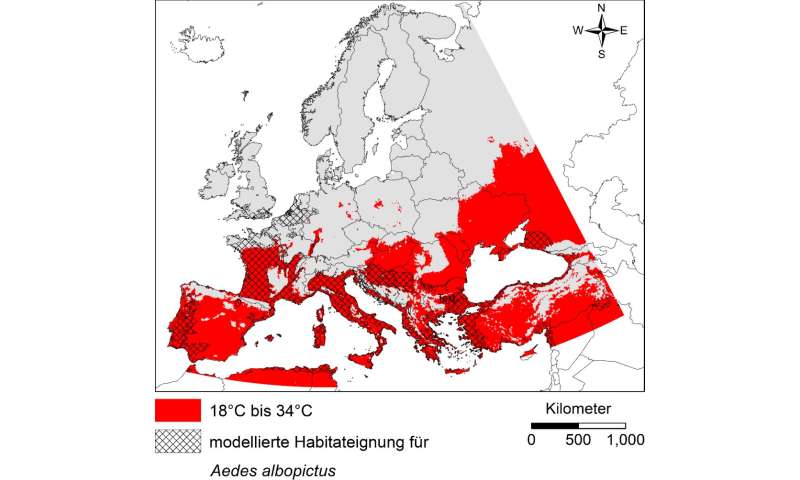
The spread of infectious diseases such as Zika depends on many different factors. Environmental factors play a role, as do socioeconomic factors. Recently, several attempts have be made to predict the transmission risk of the Zika virus at a global and local level, but the spatial and temporal patterns of transmission are still not well understood. Researchers from Goethe University and the Senckenberg Society for Nature Research in Frankfurt were now able to generate reliable maps for the transmission risk of the Zika virus in South America. The results have been published in the scientific journal PeerJ. Based on the models for South America, they will use the method to determine the Zika risk for Europe as well.
In most cases, mosquitoes of the genus Aedes transmit the Zika virus to humans. Primary vectors are the yellow fever mosquito (Aedes aegypti) and the Asian tiger mosquito (Aedes albopictus). Both mosquito species are widespread in South America. Whereas the yellow fever mosquito (Aedes albopictus) is nearly absent in Europe, the Asian tiger mosquito is widespread in the Mediterranean region.
“With our new modeling approaches we can illustrate the risk areas for Zika infections in Latin America,” says Sven Klimpel Professor for Parasitology and Infection Biology at Goethe University in Frankfurt and the Senckenberg Biodiversity and Climate Research Centre. “The models additionally allow us to illustrate Zika risk areas for Europe. For example, our models indicate the two autochthonous cases in southern France in Département Var (see illustration).” At the end of October, French authorities announced the first Zika case in Europe; about a week later, a second case was made public.
According to the researcher’s calculations, the Zika infection risk in South America is highest along the Brazilian East Coast and in Central America. The risk is moderate in the Amazon region and lowest in the southern areas of the continent. The following countries are especially affected according to the model: Brazil, Columbia, Cuba, the Dominican Republic, El Salvador, Guatemala, Haiti, Honduras, Jamaica, Mexico, Puerto Rico and Venezuela. In Europe, a risk of infection exists mainly in the Mediterranean region, but also in the inland regions of France and in the Rhine areas of Baden-Württemberg.


Source: Read Full Article
